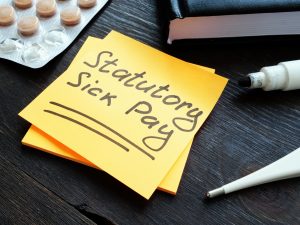HMRC has Task Forces across the UK targeting cash businesses, and in particular those involved with catering. Since catering has been largely inactive due to the COVID-19 pandemic, HMRC believes that the resumption of trading will allow effective VAT checks to be carried out on the sector.
The potential issues HMRC are looking for include under-declarations of sales; incorrect liability; standard-rated/zero-rated apportionments on eat-in and take-away foods, and the VAT treatment of tips and gratuities.
As well as carrying out scheduled visits to discuss the business and review records, HMRC are also likely to carry out test purchases. This involves officers attending the premises as a paying customer without declaring themselves, paying for their meals in cash and by payment cards, and then later visiting to review the business records after submission of the relevant VAT return to check whether their cash payments have been declared. In addition, where they hold the relevant authority, HMRC can make unannounced visits to the business to interrogate the till system, and verify the takings on a particular day.
The issue most businesses have is that the records they hold are insufficient to enable them to answer the questions raised by HMRC during these enquiries. Most traders are aware of their requirement to keep the audit trail of their Daily Gross Takings and other sales. For most businesses with a modern till system this will be in the form of a Z reading, which reports all the sales recorded in the till, at the various rates of VAT.
Many businesses do not however, appear to be aware that the till will also record any adjustments made to the till, e.g. credits, voids, no sale buttons used etc. The Z read can be set up to report all such transactions and the values attributed to them. If set up properly this provides valuable management reporting for the owner of a business; especially one not always present at the restaurant, and demonstrates to HMRC that the owner is exerting an element of control.
Even if not included within the Z read report, reports of transactions voided/credited from the till can be downloaded with relative ease by the HMRC Till Interrogation officers. As well as an audit trail of transactions that have been included in the VAT reporting, a business needs to have an audit trail/explanation for those transactions that have not been included in the VAT reporting. This could include
- Vouchers redeemed to pay for a meal;
- Customers moving table, resulting in transactions being deleted and re-input onto another table No, and
- Items deleted from a bill due to customer complaints.
Where there are both standard-rated and zero-rated sales, if the liability of those sales cannot be identified and recorded at the point of sale, a business will need to be able to demonstrate how the standard/zero-rate apportionment applied for the VAT returns has been established.
Many business are aware of the basic rule that some foods are zero rated and some are standard rated, for example, cakes are zero-rated (0% VAT charged) and biscuits are standard rated (20% VAT charged). But irrespective of whether it’s normally zero or standard rated, if customers want to eat food inside your café or restaurant, it should all be standard rated.
In a further complication, if food is served above ambient room temperature then even if customers take it away, it should also be standard rated.
So for every sale you have to consider the food itself, is it zero or standard rated? Then the temperature, is it hot or cold? Finally, the environment, is it eat in or take away?
In a nutshell, restaurants must always charge VAT on everything except food that is cold and taken away. Takeaway vendors do not need to charge VAT unless the food is hot and/or the customer would like to eat in perhaps a designated sitting area.
Where prices and menus change, we recommend businesses keep a copy of each menu, and the start/end dates it applied.
Service charges, tips and gratuities if freely given by the customer, in addition to the standard charge for meals, are outside the scope of VAT as they are not part of the consideration for the supply. Do the menu and bill make it clear that any service charge is discretionary? If it is not made clear, or a customer is obliged to pay a compulsory service charge, for example a 10% charge is added to all meal bills, or to bills where a set number of customers is reached, that service charge is seen to be further consideration for the supply of the meal, even if paid in full to staff as bonuses.
SRC-Time are one of the South East’s leading accountancy firms in advising the self-employed and partnerships in all aspects of their tax affairs and we are able to assist in any issue raised above.
Our expert team is available to provide you with advice and can be contacted on 01273 326 556 or you can drop us an email at info@src-time.co.uk or speak with an account manager to get any process started.

